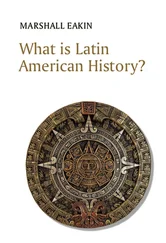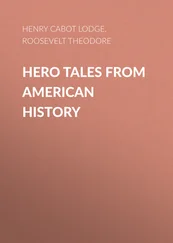For your information, the actual circumference of the earth at the equator is 24,902 miles. The distance from the Spanish coast to the Bahamas, via the route Columbus took, is about 3,900 miles.
The letter of Christopher Columbus to Luis de Santangel, February 15, 1493:
Sir—
As I know you will be rejoiced at the glorious success that our Lord has given me in my voyage, I write this to tell you how in thirty-three days I sailed to the Indies with the fleet that the illustrious King and Queen, our Sovereigns, gave me, where I discovered a great many islands, inhabited by numberless people; and of all I have taken possession for their Highnesses by proclamation and display of the Royal Standard without opposition.
The land there is elevated, with many mountains and peaks. They are most beautiful, of a thousand varied forms, accessible, and full of trees of endless varieties, so high that they seem to touch the sky, and I have been told that they never lose their foliage. I saw them as green and lovely as trees are in Spain in the month of May. Some of them were covered with blossoms, some with fruit, and some in other conditions, according to their kind. The nightingale and other small birds of a thousand kinds were singing in the month of November when I was there. There were palm trees of six or eight varieties, the graceful peculiarities of each one of them being worthy of admiration as are the other trees, fruits and grasses. There are wonderful pine woods, and very extensive ranges of meadow land. There is honey, and there are many kinds of birds, and a great variety of fruits. Inland there are numerous mines of metals and innumerable people.
Hispaniola is a marvel. Its hills and mountains, fine plains and open country, are rich and fertile for planting and for pasturage, and for building towns and villages. There are many spices and vast mines of gold and other metals in this island. They have no iron, nor steel, nor weapons, nor are they fit for them, because although they are well-made men of commanding stature, they appear extraordinarily timid. The only arms they have are sticks of cane, cut when in seed, with a sharpened stick at the end, and they are afraid to use these.
New Spain, Same Old Spaniards
(1400-1600s)
In This Chapter
Spanish voyages after Columbus
Conquest of the Aztecs and Incans
Coronado’s search for the Seven Cities of Cibola
The “Black Legend” and native revolts
In the wake of Columbus, the Portuguese scrambled to launch a series of expeditions, including that of Amerigo Vespucci and, in 1500, an expedition to India led by Pedro Alvares Cabral. To put it mildly, Cabral went wide in the South Atlantic and ended up in Brazil.
Yet another Portuguese, Ferdinand Magellan, sailed not under the flag of his native country, but on commission from Spain, charged with proving that the aptly named Spice Islands lay on the Spanish side of the line of demarcation established by the Treaty of Tordesillas.
Magellan sailed west in 1519, found the Strait of Magellan separating the southern tip of South America from Tierra del Fuego, and crossed the Strait into the Pacific. That ocean had been discovered on September 25 or 27, 1513, by Vasco Nunez de Balboa, but it was Magellan who named it. Magellan explored the Philippine Islands and even persuaded the ruler of Cebu, one of the islands, to accept Christianity. That soon embroiled Magellan in a local war, however; and on April 27, 1521, he was killed by natives on Mactan Island. One of Magellan’s captains, Juan Sebastian del Cano, brought his ship, the Victoria, back to Spain, thereby completing (in 1522) the first circumnavigation of the globe.
The voyages of Spain, as well as those of Portugal, were undertaken not for the sake of exploration, but for the purpose of conquest and colonization-and also to convert the “heathen” New World to the cause of Christ. Accordingly, two classes, of professionals were represented among the early Spanish explorers: conquistadors (“conquerors”) and priests.
The Way of the Conquistador
The New World was opened up to Spain just in the nick of time. Like much of Europe, that nation was dominated by primogeniture, meaning that the first son in a family would inherit all titles and property upon the death of the father. This cramped the style of younger sons, who were left to fend for themselves. The problem was that Spain, in effect, had been all used up—all titles were taken, all property was claimed. For the lower classes, prospects were (as they always are) even more limited. The New World represented a new chance, offering a world of opportunity.
The conquistadors followed in the footsteps of Columbus. Puerto Rico was subjugated during 1508-1509 by Juan Ponce de Leon (ca. 1460-1521), who, according to partially credible legend, had come to the New World in search of the fabled Fountain of Youth. (He didn’t find youth, but death: Ponce de Leon was mortally wounded by an Indian arrow in Florida.) Next, Jamaica and Cuba fell easily to the Spaniards in 1510 and 1511.
Far more spectacular was the battle for Mexico. It was led by Hernan Cortes, a minor nobleman who had rejected a university education to become an adventurer in the New World. In 1519, Cortes led an expedition into the present-day region of Tabasco, defeating the Tabascan Indians on March 25. By September 5, he moved against the Tlascalas as well. After triumphing over the Tlascalas, he made them allies in his campaign against their traditional enemies, the powerful Aztecs, who dominated Mexico.
Surprisingly, when Cortes landed at what is today Veracruz, he was met not with hostility, but cordially and humbly greeted by ambassadors of Montezuma II, the Aztec emperor. This fact has mystified generations of historians. Some have concluded that, unlike the ruthlessly brilliant warrior kings who had preceded him, Montezuma II was indecisive and possessed of a weak character. Others have speculated that the Aztecs, having never before seen men mounted on horseback—strange and strangely attired men at that—thought the Spaniards were incarnations of their gods. Some have suggested that Cortes deliberately posed as Quetzalcoatl, the Aztec “plumed serpent” deity. Still other scholars believe that Montezuma II hoped to appease the intruders with gifts of great beauty and value—gems and gold—in the hope that, satisfied, they would simply depart.
If that was Montezuma’s hope, it was a tragic misjudgment. Receiving the gifts, Cortes remarked: “Send me some more of it, because I and my companions suffer from a disease of the heart which can be cured only with gold.” After an embittered battle, the Aztecs surrendered on August 13, 1521, and the Aztec Mexican empire fell to Hernan Cortes.
Cortes had achieved what all the conquistadors sought: access to unimaginable wealth. However, the only other Spaniard whose success began to approach that of Cortes was Francisco Pizarro, who twice attempted to invade the Incas of Peru during the 1520s and finally achieved his objective on a third try in 1531.
Pizarro, like Cortes, was regarded as a great conqueror, and his exploits stimulated Spanish expeditions into the borderlands—that is, the area of the present United States. The hope was that, somehow, somewhere, another Aztec or Inca realm would be discovered. Indians had told Columbus tales of villages containing vast treasuries of gold. Alvar Nunez Cabeza de Vaca, a member of a calamitous 1520 expedition led by Cortes’s rival, Panfilo Narvaez, journeyed throughout the American Southwest for eight years and brought back to Spain tales of rich pueblos—the Seven Cities of Cibola—though he never claimed to have visited them personally. Another survivor of the Narvaez expedition, a black slave named Estevan, joined an expedition led by Marcos de Niza in 1539 to locate the Seven Cities. Zuni Indians killed the unfortunate Estevan in a battle outside the Hawikuh pueblo, but de Niza returned to Mexico City and there rendered a vivid account of the pueblo and its treasures. Never mind that he had failed to gain entry into Hawikuh.
Читать дальше












